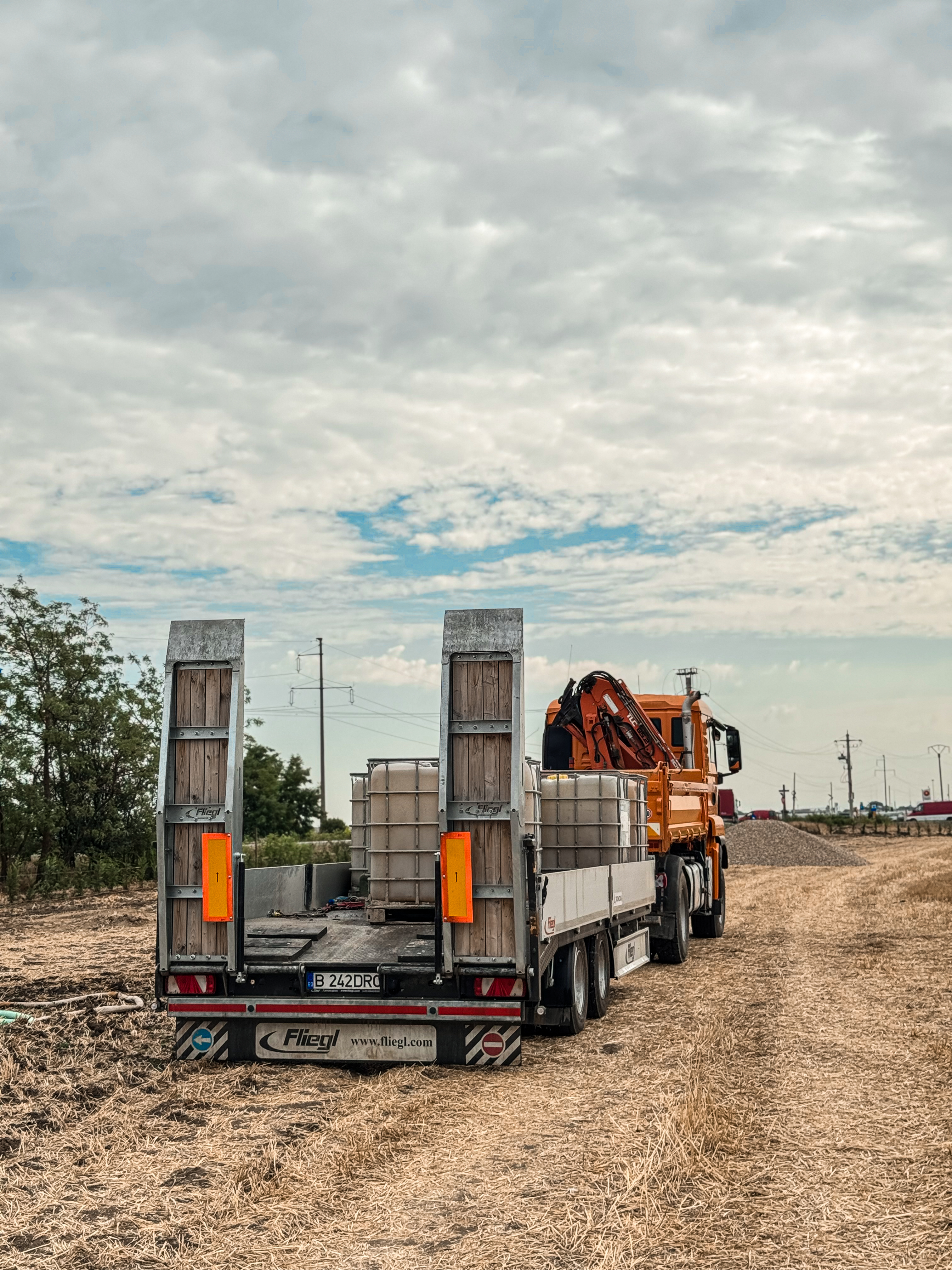In the previous article, we talked about geotechnical and exploration drilling. Today, we go one step further and discuss geothermal heating through boreholes — a modern and energy-efficient solution, increasingly used both in Romania and worldwide.
Thus, we address real estate developers and construction companies, as well as homeowners, farms, or guesthouses looking for sustainable and economical heating systems.
In other words:
Read on to find out how geothermal boreholes work in Romania, what the implementation steps are, and why more and more building owners are choosing this solution.
In short, geothermal heating through boreholes uses the heat stored in the ground to heat or cool buildings. The temperature a few meters underground remains relatively constant throughout the year (approximately 10–15°C in Romania), which allows heat to be extracted or dissipated efficiently.
For example, a real estate developer building an office complex can install a geothermal system for the buildings, significantly reducing maintenance costs for tenants. Likewise, a homeowner can opt for boreholes for a geothermal heat pump, providing heating in winter and cooling in summer, with much lower consumption than a gas boiler.
The operating principle of geothermal heating through boreholes:
Geothermal systems rely on heat pumps that act as a “heat exchanger” — in summer, they remove heat from the building and transfer it into the ground, and in winter, they reverse the process.
The popularity of geothermal energy for buildings is growing steadily, both globally and in Romania.
According to skyquestt.com, the global geothermal drilling market was valued at USD 5.6 billion in 2023 and is expected to reach USD 9.62 billion by 2032.
This means demand for energy-efficient heating and cooling solutions is increasing rapidly, and more countries are adopting policies that encourage the use of renewable sources. In Romania, geothermal drilling projects are becoming a strategic choice, especially for new buildings.
Site study and planning
Before any work begins, a geotechnical study is carried out to assess soil structure, the optimal drilling depth, and the available thermal yield. Planning also includes calculating the power needed for heating or cooling the building.
Drilling and pipe installation
The boreholes are drilled to the set depth, and polyethylene loop pipes (vertical or horizontal) are installed. These transport the heat-conductive fluid between the ground and the heat pump.
Connection to the heating/cooling system
The pipes are connected to the heat pump, which is integrated into the building’s system. From this point on, the system can provide heating in winter and cooling in summer, with reduced electricity consumption.

Reduced energy costs
Geothermal systems use up to 50–70% less energy than heating with gas or traditional electric systems. For example, if an office building spends 10,000 lei/month on gas heating, switching to geothermal can reduce the bill to 3,000–4,000 lei.
Furthermore, a gas boiler produces heat through combustion (converting gas into heat) with an efficiency of 90–95%. A geothermal heat pump uses a small amount of electricity to move a large amount of heat. Its efficiency, called COP (Coefficient of Performance), is 300–500%. This means that for every 1 kWh of electricity consumed, the system produces 3–5 kWh of thermal energy.
Energy independence
Geothermal heating reduces dependence on fluctuating fossil fuel prices and provides long-term stability. This way, buildings can operate at a predictable cost, regardless of energy crises.
Sustainability and reduced carbon footprint
Sustainability means our responsibility towards the environment and future generations. Geothermal systems emit no CO₂ in the heating/cooling process, reducing pollution and protecting natural resources. At Dromcons, we have clear values: we build for people, for a sustainable future where communities can enjoy a better life.
Rising energy prices
Gas and electricity are becoming more expensive, while geothermal solutions offer protection against these fluctuations.
An investment that pays off quickly
Although the initial cost is higher than traditional boilers, monthly savings allow the investment to pay for itself in 5–8 years, depending on consumption.
Access to high-performance technology
Modern heat pumps and next-generation pipes ensure high efficiency and a lifespan of over 25 years, with minimal maintenance.
In conclusion, geothermal heating through boreholes truly delivers significant savings and a positive impact on the environment. If you want to learn more about how we can implement a geothermal system tailored to your needs, contact us and tell us about your project!